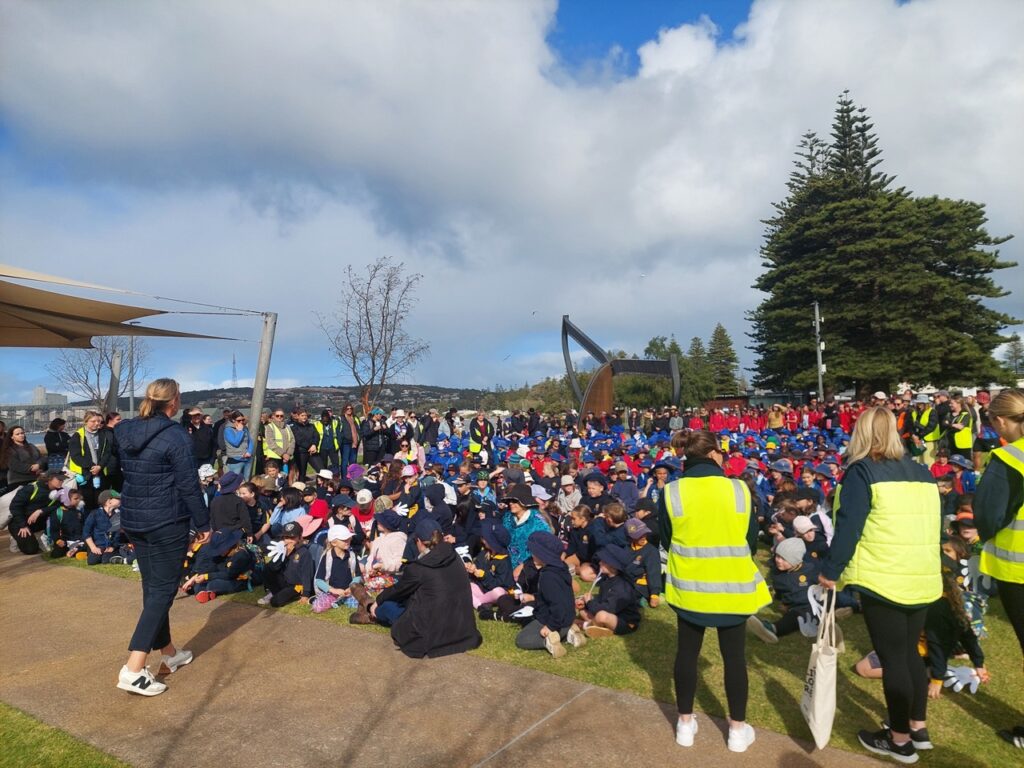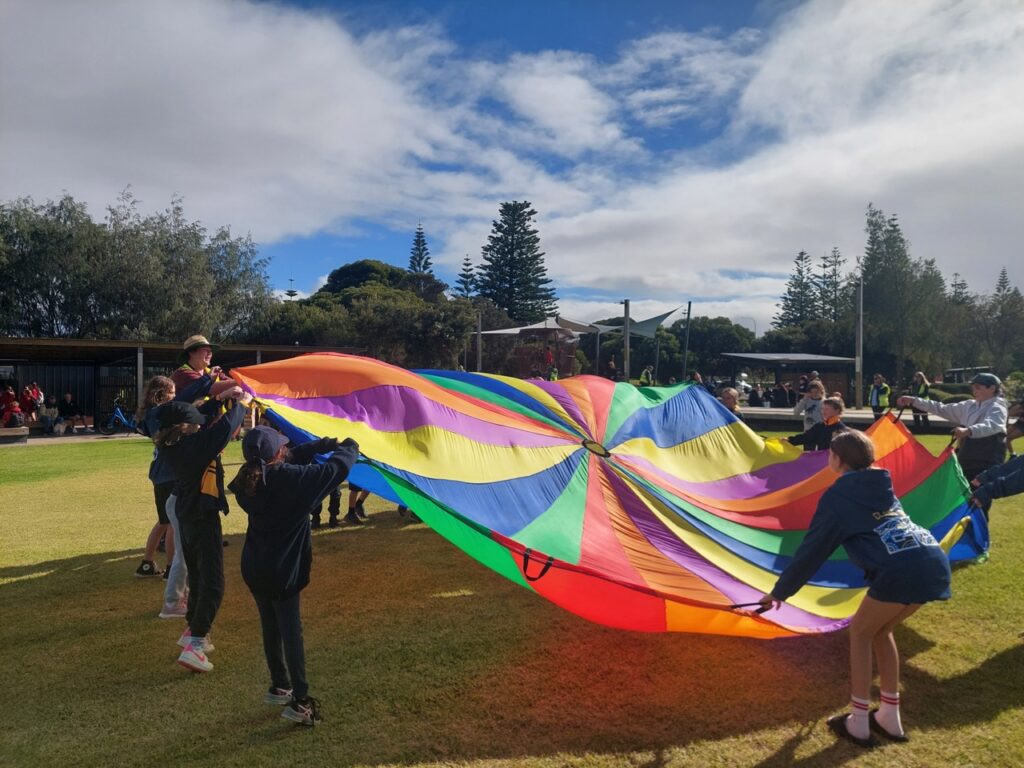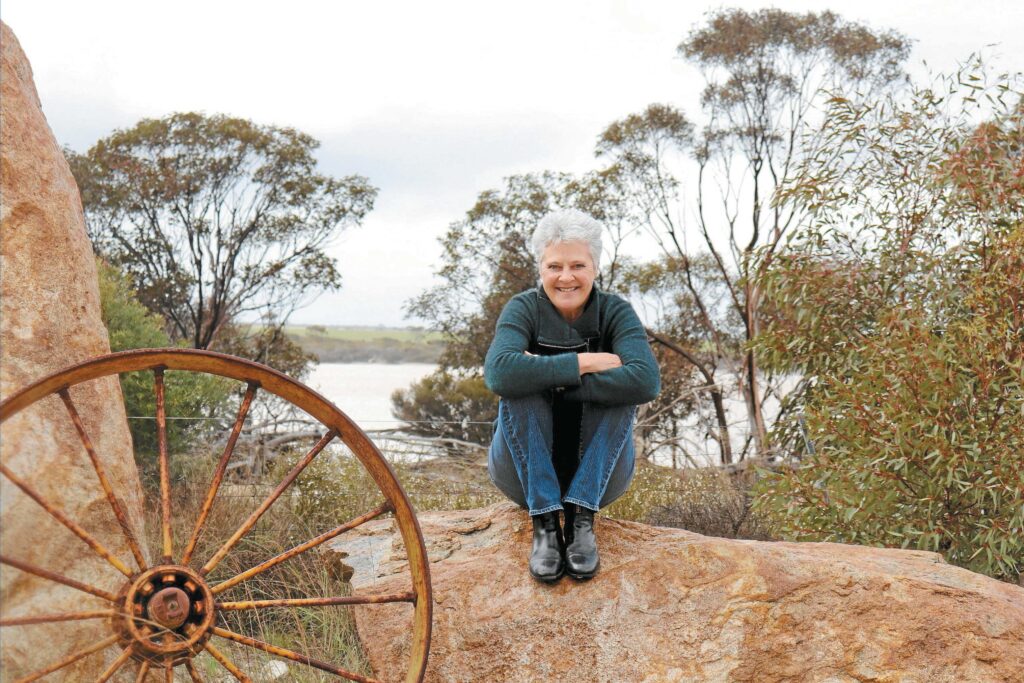ESHS students Warren Boyce, Liam Schultz and Wodin Minga partook in the National Reconciliation Week walk on Monday. Photo: Nikki Bailey.
The wardan (ocean) put on a spectacular show on Kepa Kurl Country as school groups and locals walked along the foreshore for the National Reconciliation Week walk on Monday.
While the waves battered against the rock wall and sprayed the masses of children, participants thanked the Wudjari people, past, present and future for sharing and continuing to look after the ocean and land.
Walkers commandeered the path from the whale tail to the jetty, before school kids engaged in fun games.
Event organiser Emily Aarts said she was thrilled to see so many people take part in a day of “peace, love and joy” because it showed a lot of people cared.

“Aboriginal people have done enough for us so it’s time for us to pay it forward,” Ms Aarts said.
“Reconciliation to me definitely means acknowledging what’s happened in the past a hundred per cent, and taking that and working together.
“To be able to walk along next to Kepa Curl where the water lays like a boomerang — where else would we want to be?
“Mother nature couldn’t have been better to us and that’s where you feel that spiritual connection to this place because look at today — it was awesome so we’re really stoked.”
National Reconciliation Week commemorates the success of two respective milestones for Indigenous Australians.

First: the 1967 referendum in which the Australian Government was given the right to address inequalities faced by Aboriginal people.
And second: the High Court Mabo decision which saw Indigenous man Eddie Mabo successfully fight for recognition of traditional land ownership.
Despite these advances, Indigenous Australians are still the most disadvantaged group in the country.
This year’s reconciliation theme “bridging now to next” called for Australians to push forward together, while using past lessons to guide the future.
Students reflected on Australia’s history during the morning walk.

“Reconciliation to me means getting together to realise what the white people did wrong to Aboriginal people and getting together to say sorry,” Esperance Senior High School (ESHS) student Lucas Biggers said.
“Reconciliation means saying sorry to all the Aboriginal people that got taken away by the white people,” ESHS’s Nathan Cassam said.
Other locals focussed on the future when thinking about reconciliation.
“It’s being as one literally — instead of there being negative out there all the time it’s a time to be together and celebrate,” participant Ros Rivers said.

“For me it means coming together and that everybody learns about Aboriginal culture and colonial history from then to where we are now and if everybody gets to know each other and understand each other then the world would be a better place,” participant Bill Griggs said.
Tjaltjraak workforce coordinator Jonty Scoble said: “it means putting aside our differences and thinking about how we can progress together.”
National Reconciliation Week started in 1996 and runs from May 27 – June 3 every year.




